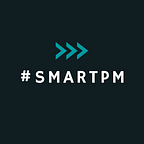#17 Agile 101 : Part -5 Artifacts
Agile artifacts are tangible or digital documents, charts, or tools that provide essential information and support the Agile development process. These artifacts serve as valuable sources of information, help foster transparency, and promote effective communication within Agile teams and with stakeholders. Here are some common Agile artifacts:
The Main Artifacts
- Product Backlog: The Product Backlog is a dynamic, prioritized list of all the work that needs to be done to complete the project. It is owned and maintained by the Product Owner, who continuously refines and adjusts the backlog based on feedback and changing requirements. The items in the Product Backlog are usually expressed as user stories, features, bug fixes, technical tasks, or any other work necessary to create a potentially shippable product. Each item in the Product Backlog is ordered based on its business value and priority, with the most valuable items at the top. The Product Backlog serves as the single source of truth for the Scrum Team to understand what needs to be done and provides a clear direction for the development effort.
- Sprint Backlog: The Sprint Backlog is a subset of the Product Backlog that contains the items the Development Team commits to completing during a specific sprint. It is a forecast of the work that the team believes can be accomplished within the sprint’s time frame. During the Sprint Planning meeting, the Development Team selects items from the Product Backlog and breaks them down into tasks that they can complete during the sprint. The Sprint Backlog is a visible representation of the work in progress, and it is updated regularly throughout the sprint to track progress. As the Development Team completes tasks, the Sprint Backlog is updated, providing transparency into the sprint’s progress and helping the team to self-organize and manage their work efficiently.
- Increment: The Increment is the sum of all the completed and potentially shippable items from previous sprints. It is the portion of the product that is ready for review by stakeholders, including customers and end-users. At the end of each sprint, the Development Team should have a product increment that is a working, usable version of the product. The Increment is the primary measure of progress and value in Scrum. It allows stakeholders to provide feedback and ensure that the product is continuously improving with each sprint. Each increment builds upon previous increments, progressively growing the product until it reaches its full scope or desired level of functionality.
Extended Artifacts
While the above are specific Scrum artifacts, other Agile artifacts like the Definition of Done, Burn-Down Chart, and Burn-Up Chart are also commonly used in Scrum as well as other Agile frameworks. These artifacts play essential roles in promoting transparency, collaboration, and continuous improvement within the Scrum team and with stakeholders. The following are the extended artifacts
- Sprint Review and Retrospective : During Sprint Retrospectives, the team identifies action items for continuous improvement. These action items are documented and tracked for implementation in future sprints.
- Definition of Done (DoD): The Definition of Done is a set of criteria that must be met for a user story or a task to be considered complete and potentially shippable. It ensures a shared understanding of the team’s quality standards and helps prevent misunderstandings about the definition of “done.”
- Burn-Down Chart: The Burn-Down Chart is a visual representation of the remaining work in the current sprint or release over time. It shows the progress of completed work and indicates whether the team is on track to complete all committed work within the given timeframe.
- Burn-Up Chart: Similar to the Burn-Down Chart, the Burn-Up Chart tracks progress over time, but it also shows the total amount of work completed over time. It allows stakeholders to visualize not only the remaining work but also the growth of the product’s features or scope.
- Velocity Chart: The Velocity Chart shows the amount of work completed by the team in previous sprints. It provides a historical reference for estimating how much work the team can accomplish in future sprints, helping with sprint planning and release forecasting.
- Task Board (Kanban Board): In Kanban, the Task Board is a visual representation of the workflow for the team’s tasks or work items. It shows each work item’s status and progress through different stages, helping the team manage their flow of work efficiently.
- Release Burndown Chart: The Release Burndown Chart tracks the completion of features or user stories over the course of multiple sprints or the entire release. It provides an overview of progress toward achieving the release goals.
- Spike: A Spike is a time-boxed research or investigation activity carried out by the team to gain insights, reduce uncertainties, or explore potential solutions before estimating and committing to work.
- Definition of Ready (DoR): The Definition of Ready is a set of criteria that must be met before a user story or task can be considered ready for development. It ensures that items in the Product Backlog are well-defined and ready for the team to work on during sprint planning.
These Agile artifacts play a vital role in fostering collaboration, providing transparency, and facilitating effective decision-making throughout the Agile development process. They help the team and stakeholders understand the progress of the project, identify potential issues, and continuously improve the development practices.
This is post is a part of 8 part series of Agile 101 _ Agile Product management for dummies : Follow for the Next Part
Originally published at https://www.linkedin.com.
